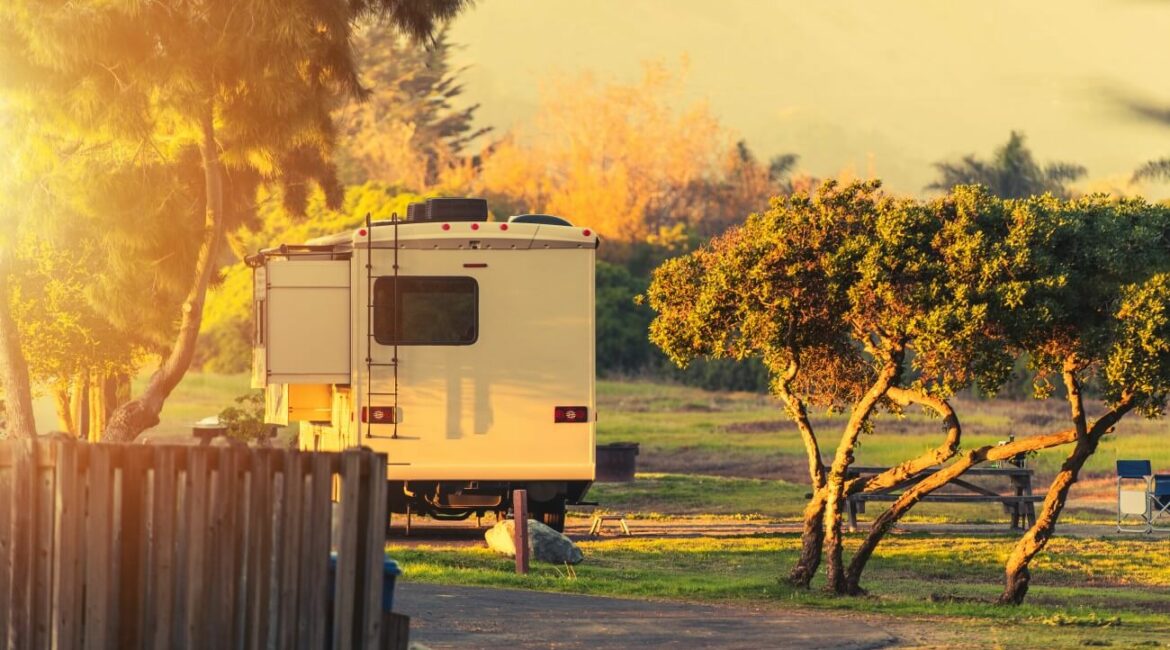Welcome to the ultimate guide on RV leveling – a topic that’s often underestimated but crucial for a comfortable and safe RV experience. If you’re new to RVing or just looking to brush up on your skills, this guide is here to simplify RV leveling for you. I’ll share tips from my own journey in a language you can relate to because, let’s face it, we’ve all been beginners once.
Why Leveling Matters
It’s no secret that RVing offers the freedom to roam, explore, and live life on the open road. But while the idea of embarking on adventures in your home on wheels is undeniably exciting, there’s a vital element that often gets overlooked: RV leveling. Why does it matter, you ask? Let’s dive into the reasons why achieving a level RV is not just a minor detail but a crucial aspect of the RV lifestyle. Before we dive into the nitty-gritty, let’s talk about why RV leveling is essential. When you’re out there exploring the beauty of nature or quirky roadside attractions, you want your RV to be stable and comfortable. Here’s why leveling matters:
Comfort Matters
One of the main reasons why leveling your RV is essential is the comfort it provides. When you step into your RV, it’s your sanctuary, your home away from home. It’s where you relax, cook your meals, sleep, and unwind. Picture yourself trying to whip up your favorite dinner, but your pots and pans keep sliding off the stovetop because your RV isn’t level. The frustration can quickly overshadow the joy of cooking on the road. Proper leveling ensures that your RV becomes a comfortable space where you can move about without feeling like you’re constantly battling gravity.
Safety First
Safety should always be a top priority when you’re living and traveling in an RV. While the idea of sleeping on a slight slope might sound like an adventure, it’s not ideal when it comes to your well-being. Leveling your RV is an essential safety measure. Sleeping on an uneven surface can lead to discomfort, restlessness, and even accidents. Imagine waking up to find yourself in an awkward position because your bed isn’t level. These are experiences you’d rather avoid, and proper leveling ensures that you rest and travel safely.
Appliances Love It
Your RV is equipped with a range of appliances that add convenience to your travels. However, these appliances are sensitive and require specific conditions to function correctly. For instance, your refrigerator, which houses your precious food and beverages, needs to be level for efficient cooling. If your RV isn’t level, your fridge may not cool properly, and your ice cream might become a milkshake in the heat. The same goes for your stove and oven. Cooking becomes a tricky task when pots and pans slide around, and you’re not sure if you’re sautéing or tossing ingredients.
How to Level Your RV
Now that you understand why leveling your RV is so important, let’s delve into the practical side of things. Achieving that perfect level can sometimes feel like a puzzle, but fear not; it’s entirely manageable, even for beginners. Here’s a step-by-step guide to help you level your RV like a pro: Now that we’ve established the importance of leveling, let’s get practical. Here’s how you can level your RV like a pro:
Use a Bubble Level
Your first tool of choice is a trusty bubble level. This handy device will be your guide in determining where your RV needs adjustments. Many RVs come equipped with built-in levels, but having an additional bubble level is always a wise move. Place it inside your RV where you can easily see it.
Chock the Wheels
Wheel chocks are your best friends when it comes to leveling your RV. These are wedge-like blocks that you place securely against the tires to prevent any movement. Before you start any leveling process, make sure your wheel chocks are in place. They’ll keep your RV from rolling while you make adjustments.
Adjust the Jacks
If your RV is equipped with leveling jacks, you’re in luck. These jacks are your primary tools for raising or lowering the low side of your RV until it’s level. Here’s how to use them:
- Position Your RV: First, park your RV in the spot where you plan to set up camp.
- Engage the Parking Brake: Make sure your parking brake is engaged to prevent any unwanted movement.
- Determine the Low Side: Refer to your bubble level to identify which side of your RV is lower. This is where you’ll need to make adjustments.
- Lift or Lower the Jacks: Use the leveling jacks to make the necessary adjustments. If one side of your RV is low, extend the jack on that side. If it’s too high, retract it.
- Re-Check with the Bubble Level: After making your adjustments, re-check the bubble level. It might take a few tries to get it just right. Be patient and precise; small adjustments can make a significant difference.
Re-Check and Fine-Tune
After adjusting, re-check with your bubble level. It may take a few tries to get it just right. Don’t rush this process; patience is key.
Use Stabilizer Jacks
Once your RV is level, use the stabilizer jacks. These jacks aren’t for leveling but for further securing your RV. They help reduce any wobbling or rocking when you’re inside your RV. They provide extra stability and enhance your overall camping experience.
FAQ : Q – RV Leveling Made Easy
- Is it necessary to level my RV every time I park?
Yes, it’s essential. Leveling ensures comfort, safety, and proper appliance operation. It’s a small effort for a big reward. - What if I don’t have leveling jacks?
You can use leveling blocks or ramps to achieve the same effect. These are handy tools for travel trailer owners. - How do I know if my RV is level?
Use a bubble level placed inside your RV. It will show you where adjustments are needed. - Can I skip leveling for a short stop?
It’s best to level your RV every time you park, no matter how short the stop. Safety and comfort should never be compromised. - What are wheel chocks, and why are they important?
Wheel chocks are blocks placed against the tires to prevent your RV from rolling. They are crucial for your safety and stability.
RVs offer the flexibility to travel and camp in various locations, providing convenient amenities wherever you go. However, leveling the RV is crucial when camping on uneven ground to prevent issues like items sliding inside, difficulty sleeping, refrigerator malfunctions, and inaccurate water tank sensors. Leveling processes vary slightly between motorhomes and travel trailers. For motorhomes, use a bubble level and blocks under wheels to achieve balance both left-to-right and front-to-back. For travel trailers, check left-right balance, adjust using blocks, and then manage front-back leveling via the A-frame or fifth-wheel landing jack. Auto-leveling systems in some RVs simplify this process. Best practices include starting as level as possible, following manufacturer recommendations, and using blocks or jack pads. Always level your RV before extending any slide-outs, unless specified otherwise in your RV manual.
- Transform Your Health with Medford Medical Weight Loss Program - June 9, 2025
- A Chat with Nate and Mika, Christian Wedding Photographers - July 18, 2024
- Ultimate Guide To Playing Online Casinos - May 27, 2024









